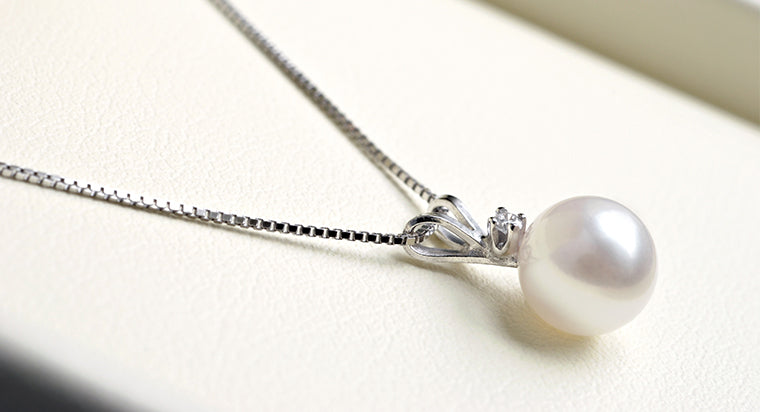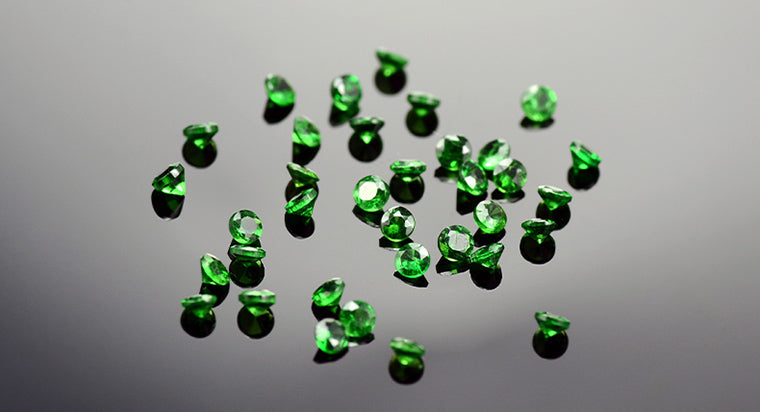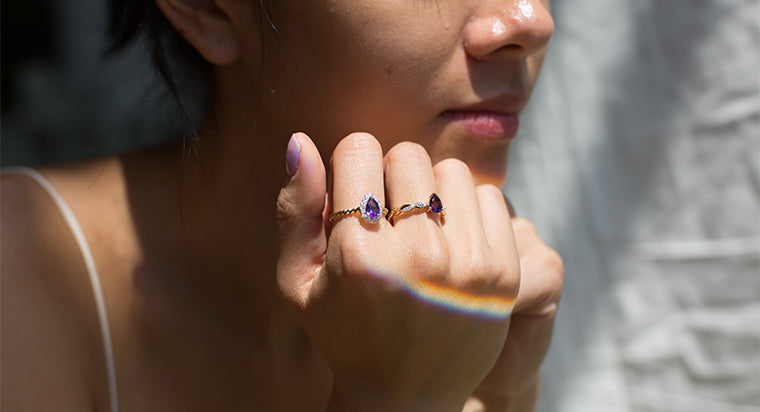What are Moissanite Grades

Moissanite is an affordable diamond simulant that's becoming a popular alternative for engagement rings and jewelry thanks to its alluring flashes of color and price point. Just like diamonds, rubies, and sapphires, moissanite is graded based on several quality factors known as the 4C's. To help you make informed moissanite purchases, we will guide you through the 4C's of stone grading and every aspect of the moissanite grading scale.
TABLE OF CONTENTS
Moissanite Color Grade
Color grade refers to the amount of color present in the stone graded from a scale of D for colorless to Z for a slight yellow tint. Moissanite color grades are broken down into three major groups:
- Colorless: Comparable to a D, E, or F color grade
- Slightly Colorless: Comparable to a G, H, or I color grade
- Yellow Tinted: Comparable to a J or K color grade

Moissanite Clarity Grade
Clarity grade indicates the number of imperfections, known as inclusions. Nearly all gemstones have inclusions, but luckily for moissanite, most of its inclusions are not visible to the naked eye and require intense magnification to be seen.
Moissanite's clarity is graded depending on the number of inclusions the stone has. These grades can be brown down into five easy to understand categories:
- FL, IF: Flawless and internally flawless
- VVS1, VVS2: Very, very slightly included
- VS1, VS2: Very slightly included
- SI1, SI2: Slightly included
- I1, I2, I3: Included
Common moissanite inclusions are:
Needles: These thin, needle-like imperfections are the most common type of inclusions for moissanite. Needles are difficult to see without close observation, and only compromise the moissanite's beauty if many needles are clustered together.

Mineral Crystals: These are crystals within that can appear light or dark.

Clouds: These are milky looking spots within the stone, and when viewed under magnification, you can see that they are actually clusters of needle and crystal inclusions.

Feathers: These inclusions are miniature fractures within the gem, which look like a crack or a feather. Never buy moissanite with many feathers because they will have weaker structural integrity and can more easily fracture.

Knots: These inclusions look like white or transparent crystals. Avoid moissanite with many knots because they also worsen the stone's structural integrity.

Chips: These inclusions are shallow openings on the stone's surface, typically resulting from its owner accidentally damaging the moissanite during daily wear. Chips are commonly seen on the gemstone's culet, facet junctions, and girdle.

Cavities: Just like a tooth cavity, moissanite cavities are openings on the stone that easily trap dirt and oil, creating unsightly dark spots.

Moissanite Cut Grade
Cut grade denotes how well a stone is cut and with grades ranging from Excellent to Poor. With excellent cut grades, light can best travel throughout the stone and sparkle. Alternatively, poorly cut stones will not allow light to effectively travel throughout the stone, resulting in a lifeless looking moissanite. The grade chart for cut is simply:
- Excellent
- Very Good
- Good
- Fair
- Poor
Moissanite Carat Weight
For diamonds, carat weight refers to how heavy the stone is. However, moissanite is less dense than diamonds which makes the two stones difficult to compare by weight. Due to the density difference, a moissanite's “carat weight” is denoted by the stone's size in millimeters. For example, a one-carat diamond is comparable to a 6.5mm moissanite.
What is the Best Grade of Moissanite?
Knowing moissanite grades is valuable for shoppers because the knowledge to fully understand the characteristics they want their stone to have, allows them to shop with confidence.
While ideal grades can vary by a person's taste, we recommend getting a colorless moissanite with D to F color grades, clarity grades that fall from FL to VS1, and has an Excellent or Very Good cut grade. With these desirable grades, you will be sure to have an exceptionally beautiful moissanite stone.
FAQs
Which gemstone is a popular diamond alternative for engagement rings?
How is a Moissanite's clarity graded?
Moissanite's clarity is graded depending on the number of inclusions in the stone, as such, there are five main clarity grades.
- FL, IF: Flawless and internally flawless
- VVS1, VVS2: Very, very slightly included
- VS1, VS2: Very slightly included
- SI1, SI2: Slightly included
- I1, I2, I3: Included
What are the standard inclusions found in a Moissanite?
Which is the best cut grade for a Moissanite?
Which is the best grade for a Moissanite?









